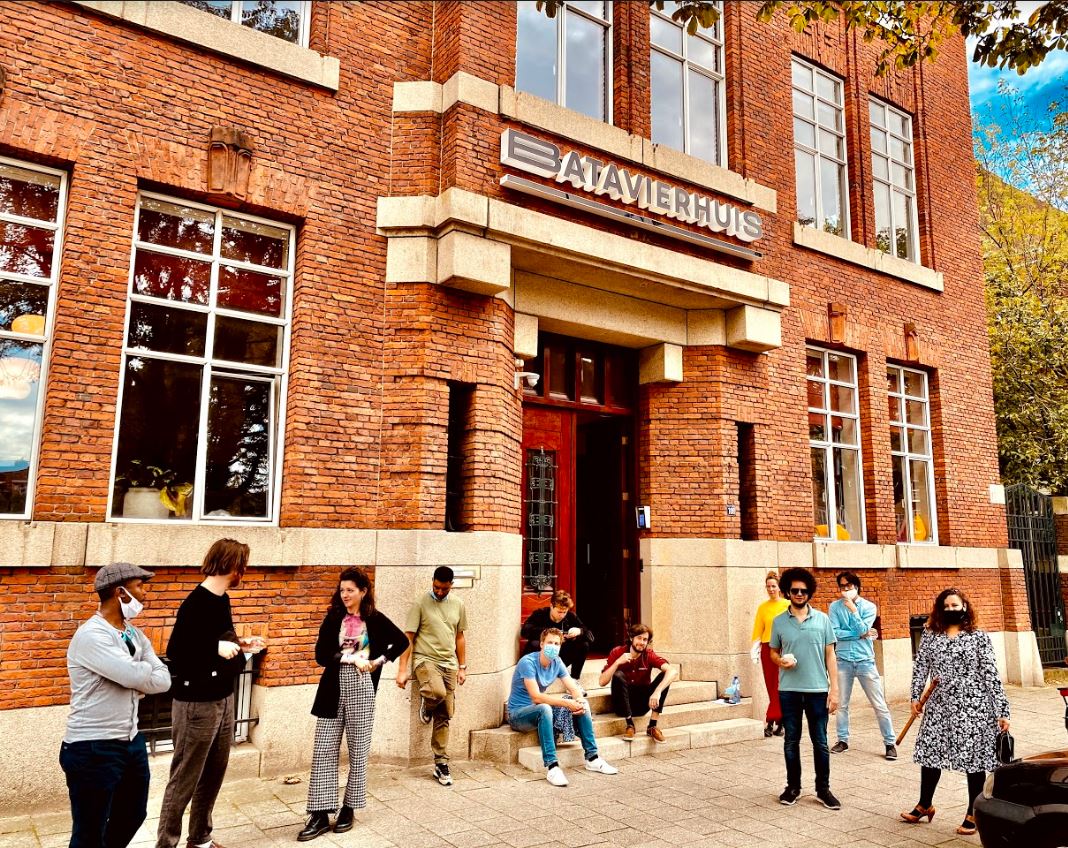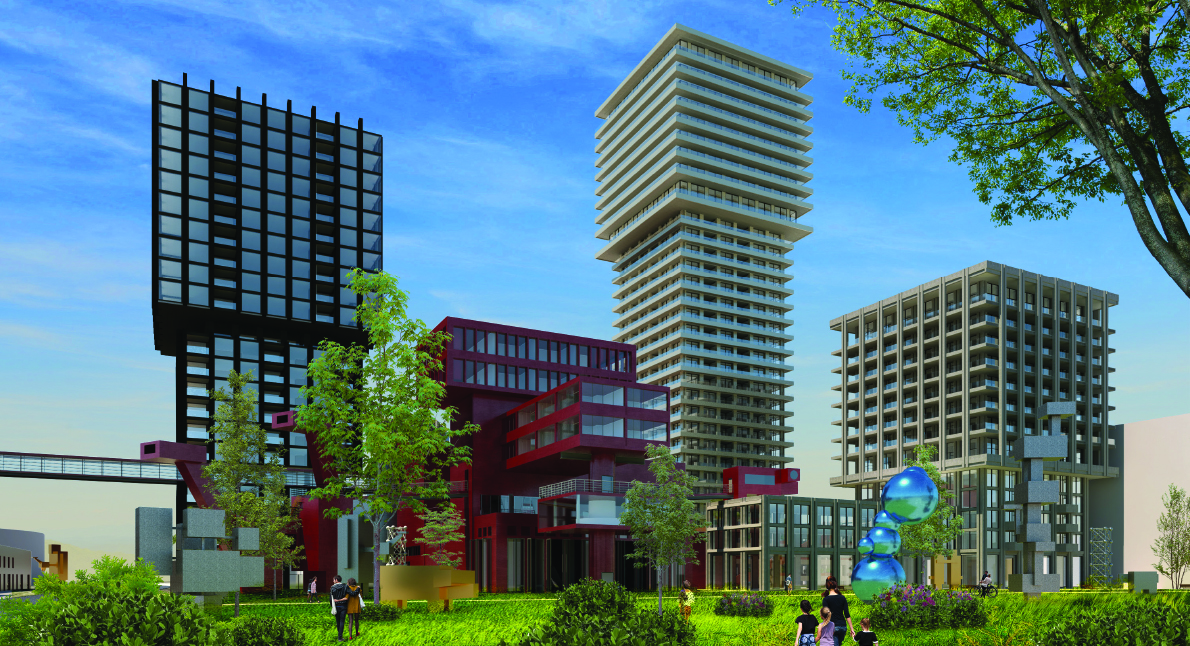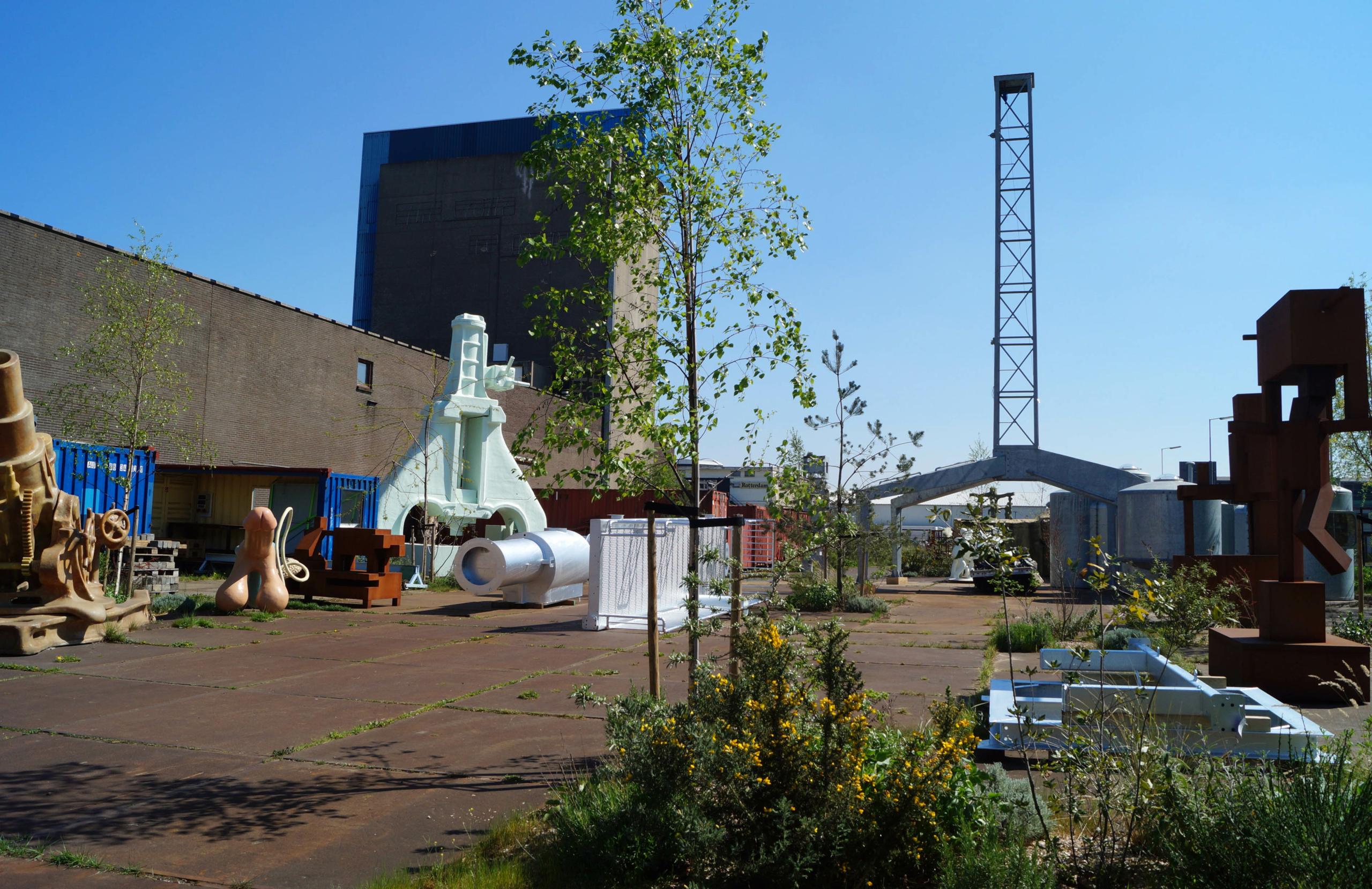A city without a lively, diverse cultural life isn’t appealing. But who is prepared to pay for culture or settle for a lower ROI? Current valuation and financing models focus purely on financial value, yet in the cultural sector, a significant share of the ROI is intangible. Meaning that the artists and creatives who, in many cases, were the ones who put the area on the map, have to move out when the ‘real’ development begins. But how can the original placemakers be assured of a space in the long term? The question is: how can culture’s added value be sustainably integrated into area development? Four different groups can help to make this happen: the municipality, the fund, the philanthropist and the artist.
The investor doesn’t reap the rewards
Whether it is about establishing a cultural venue from scratch or perpetuating a successful temporary one, development costs money. And sooner or later, investors expect to see a return on their investment. ROI still tends to be expressed in terms of financial value. And that’s the sticking point when it comes to investments in cultural and social initiatives. Financially, a creative or cultural space generates far less in the short and medium term than one with a commercial function. It’s far more lucrative to facilitate retail, housing or hospitality. But this scenario overlooks the fact that a cultural centre—whether or not in a mix with other functions—often enriches the area’s appeal, social value, liveability and reputation, and promotes the functioning of the city’s cultural ecosystems. But how do you start the conversation about this social added value? And who’s going to pull out their wallets for that?
There are two dilemmas in this discussion. First of all, it isn’t easy to quantify the value of culture. Secondly, the investor doesn’t always reap the rewards. The costs are largely borne by the developer and property owner, but those who enjoy the benefits are users, residents and society. This ‘split incentives’ dilemma also crops up in relation to themes like sustainability and creating a healthy living environment. The investor isn’t the one who benefits.
Culture’s economic value
The other bottleneck is how to capitalise on the impact of culture. In other words; what is the economic value of a cultural place? In 2020 Stichting Kunstaccommodatie Rotterdam (SKAR), along with organisations from other cities, asked advisory bureau Rebel to look into this. Rebel’s conclusion was that every euro that SKAR spends on expenditure connected to rental or property generates 24 euros. Think in terms of a rise in property values, increased revenue for local companies, nearby retail and hospitality, job creation and enhanced liveability and social cohesion. In short, every euro invested in culture yields a multiplier of 24. Rebel also calculated that 11 of those 24 euros would benefit the government. That one euro provides the government with 11 euros in income.
Yet these benefits won’t materialise if new homes are built in the area. According to the research house sales will generate a lot of money in the short term, but in the long term, a cultural space will create greater economic value. In other words, it pays to invest in a cultural space. But only a small variety of stakeholders are prepared to invest. We touch on four of them below.
The municipality as facilitator
Municipalities are accustomed to initiating and facilitating cultural places. This often happens top-down, when established cultural institutions want to expand and need more space. In such cases, these cultural bodies are concentrated in a museum, arts centre or cultural house. But when it comes to financially facilitating a cultural place initiated at grass roots level, by artists—whether or not facilitated by property owners or developers who temporarily make vacant land and vacant buildings available—an entirely different approach is required. How do you guarantee that that kind of venue has a long-term future?
An excellent example of a municipality-as-facilitator is Amsterdam City Council. The municipality is aware that Amsterdam’s cultural venues are under pressure. New city-wide policies require that every area development must guarantee a specific yardage for culture. What this means, is that cultural spaces should also be included in land development models and should ensure that the municipality charges lower land values for the portion earmarked for culture. “Municipalities have sufficient tools to align the valuation of real estate with the financial capacity of cultural creators,” says Alexander Ramselaar, an expert in finance and real estate for the cultural and creative sectors. “There are a number of interesting cases of such projects, but there’s still lots of potential for fruitful cooperation between cultural initiators, governments, developers, financiers, funds and philanthropists.”
Municipalities were recently permitted to participate as a financial partner in special funds aimed at helping cultural initiatives to secure their future.
The foundation as helping hand
The ‘residents’ of a successful temporary cultural space often want to remain at that location permanently, perhaps by buying the space, but lack the financial resources. A bank generally finances between 60% and 70%, which means that alternative channels must be found to finance the remaining 30 to 40%. However, securing this last portion of finance is often impossible due to the capital recovery terms applied by the financing bodies.
More and more special funds are springing up, precisely for this reason. Revolving funds, in which the province, municipalities, developers, national, local and regional funds, cultural and creative organisations participate. And eventually private investors as well. Revolving funds offers soft loans, which makes them financially feasible. The loan is repaid to the fund from operating profits. Or tenants can buy in in the long term and thus become the owner of the place themselves. With which it is most definitely a loan, not a subsidy.
Nationwide, there is significant interest in revolving funds, but there’s still a long way to go. The ‘Stadmakersfonds’ is now active in and around Utrecht and has the ambition to grow into a national fund for city makers’ initiatives. This fund focuses specifically on new organisations that often have difficulty securing funding.
There are also active funds that provide subsidies to cultural organisations. Usually for a specific project, but sometimes to help establish a venue or contribute to running costs.
The philanthropist as enabler
Philanthropists can also be approached for donations or loans. Anglo-Saxon countries have a centuries-long tradition of wealthy industrialists who allocate a share of their profits to the cultural sector. In the Netherlands, patrons and philanthropists are (again) on the rise. Take the Droom en Daad Foundation in Rotterdam, which was founded by the Van der Vorm family, who amassed their fortune through the Port of Rotterdam and want to give back to their city. Droom en Daad invests in projects that focus on making a Rotterdam a vibrant, compelling, liveable city. The foundation helped to realise the design of the new location of Theater Zuidplein, and was also involved in restoring the Park near the Euromast. Droom en Daad also launches its own projects, like Batavierhuis, a centre to encourage and stimulate local music talent. The Batavierhuis was created to meet the need for rehearsal space, and to retain the city’s talent by offering a meeting place for like-minded people. Droom en Daad acquired a spectacular listed building to house the centre. For the modest membership fee of 50 euros a year, a Batavier has access to all the facilities; studios, rehearsal rooms, concert halls. In return, members man the bar, give a certain number of concerts, and sit on a committee. These things are set down in agreements so that everyone is clear of his or her duties and expectations. Now, there are 70 Batavians, who are jointly responsible for the marketing, programming and organisation of concerts, and exercise full artistic freedom. This keeps fixed costs low. A business director supervises the policy and finances, the recruitment of new Batavians, initiates collaborations and is responsible for all practical and operational matters. Affiliated organisations, such as music festivals, photographers and designers, are also welcome at the Batavierhuis, which creates a lively cross-pollination.

Even on a smaller scale, philanthropists have an increasing influence on the cultural landscape. By donating or lending during their lifetime, or by donating bequests and legacies to social and cultural initiatives after their death. And, with interest rates currently negative, more and more people are looking for other ways to invest their money. Any private individual who has the patience to wait for ten years or more for a return on their investment, has a chance to contribute structurally to their city and its cultural life.
The artist as developer
Let’s not forget that artists can also take matters into their own hands. Which is exactly what visual artist Joep van Lieshout did in the Rotterdam MerweVierhaven area. He moved into this decaying fringe of Rotterdam back in the 1980s. Long before it appeared on the mental map of Rotterdam. AVL Mundo houses his studio in a large warehouse, and has a sculpture garden, where events and festivals are held regularly. Van Lieshout is undeniably one of the greatest driving forces behind the renaissance of this unusual slice of Rotterdam.

Earlier this year, Van Lieshout, together with RED Company, presented the ‘BRUTUS’ plan; a unique complex that spans culture, housing, and workspaces. At the heart of BRUTUS is a cultural centre around which three rugged residential towers will be built. In this project, art and commerce join forces as equal partners. Van Lieshout says that with BRUTUS, he has developed a new model for urban renewal ‘where creatives are not automatically pushed out of the neighbourhood as soon as it becomes attractive’. Joep van Lieshout has a very clear vision of area development: ‘You have to think big.’
Van Lieshout’s visionary plan was translated into a detailed spatial design and a solid business case by Van Lieshout, RED Company and Powerhouse Company. A process in which financial partners were also involved. Both RED and Powerhouse are (partly) owned by Nanne de Ru, so that the ‘planning and calculations’ were in the hands of one person.
As a developer and architect De Ru is also involved in redeveloping the Bunkertoren in Eindhoven. This former student centre, designed by Hugh Maaskant is being renovated with funding generated by a housing development. And so will the park that is to be built around the building. De Ru calls this the ‘Robin Hood’ principle: exploiting the profitable elements of a project to finance the unprofitable social added value.
The beating heart of BRUTUS will be a 10,000 square meter cultural centre. It includes a museum, exhibition spaces, a publicly accessible art storage, a place for art education, workshop spaces and Van Lieshout’s studio. The outdoor area will include an open-air cinema, theatre and sculpture garden. Three residential towers with a total of 750 homes will be built around the cultural cluster. The costs for the extra qualities of the cultural centre will be compensated by the proceeds from the sale and rental of the apartments. The housing is integral to the project, and pays special attention to quality since the apartments must appeal to both investors and private buyers.
According to De Ru, developing a cultural hub is no riskier than any other development. “Cultural initiatives yield very little, that’s a given. That has to be compensated with other revenues.” There is a risk that applies to every development: as long as the housing market is buoyant, you have a watertight business case. De Ru emphasises that the biggest risk is wishful thinking. “Don’t fall too in love with your own project. Chances are you won’t get the project funded. So stay realistic and work with experts on a substantiated business case.”
As well as an ambitious vision, Van Lieshout has another advantage. He has had the land on long lease since 2008, which gives him a solid position in the area. The cultural centre falls under the AVL Mundo Foundation, which will be tasked with a major project now that this plan has been included in the Rotterdam Culture Plan 2021-2024. If, as expected, the project gets the go-ahead soon, you’ll be able to visit BRUTUS from 2025.

Ownership is crucial
The above examples make a number of things clear. For those who want to create their own place, it is important to develop a vision of the place very early in the process. If that vision is there, it is important to disseminate it. Through placemaking, through events, through stories in the media. This will generate support and ensure that the plan and the place are embraced by more and more people. A real estate position seems to be another requirement. Ownership of a place is crucial to gain and maintain a position. Speedy negotiations with possible financiers and forging smart coalitions locally, hugely increase the chance of a successful realisation.
Even the very best plan can fail because of financing. So it’s crucial to have the support of an expert team when you elaborate the plan and use objective and realistic numbers in the business case. Developing this kind of site is a massive job that calls for a large team of experts, and takes years of work.
In short, cultural spaces require different valuation and financing models. Models that also include the intangible benefits, as early as the placemaking phase. The artists create value, not only for the owner and the developer, but also for the area concerned and for society. The parties that will benefit from the space should be involved and, working collectively, develop a solid business case. At the moment, this strategy is still in the pioneering phase but frontrunners, such as the above examples, show that there are other, possible, approaches: working in close collaboration, based on mutual trust, and with a shared vision of what a particular place deserves and delivers.